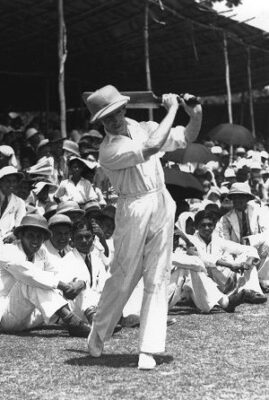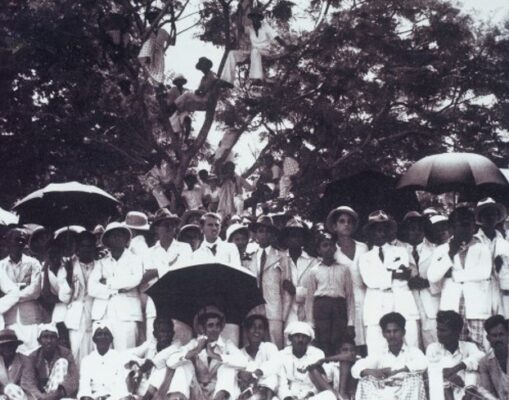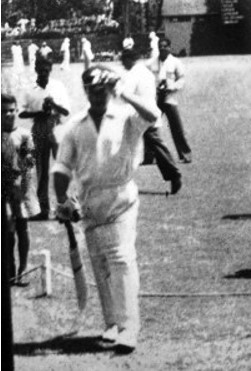Socio-Political Insights from Views of the Aussie-Ceylon Match in 1938-by Michael Roberts

The recent entry in THUPPAHI on Lindsay Hassett has underlined certain strands within the history of Sri Lanka in the 1930s to 1950 through the background scenery displayed by the photographs deployed therein.
These glimpses must be interpreted with some understanding of the political economy and geography of the decades spanning the 1920s-to-1950s. My work on People Inbetween (1989) has underlined the degree to which the Colombo metropolitan arena was a hegemonic centre which drew migrants from most parts of the island as well as trading communities from parts of India. The first four maps in that book[i] …. drawn largely with the help of my old mates in the Geography Departments of Ceylon University, viz. Kusuma Gunawardena and Percy Silva …. provide keen readers with a set of ‘snapshot readings’ of this weightage – even though they depict a scenario in the year 1971 – because the trends had been in place since the 19th century (see https://thuppahis.com/2021/05/10/the-hegemony-of-colombo-from-way-back/)..
While tennis-ball or kaduru-ball cricket may have been pursued by lads in rural and coastal spaces, the competitive cricketing arenas were mostly restricted to urban centres along the western littoral, the Jaffna Peninsula, Kandy, Kurunegala, Matale and the plantation town…. and Batticaloa and Trincomalee. In cricket too, Colombo loomed as giant centre over the rest. This primacy was underlined in the 1920s-to-1940s by the degree to which foreign touring sides played most of their matches in Colombo. The most prominent of these – promoting island-wide interest in middle class circles – were the whistle-stop matches played by MCC or Australian sides on their way by passenger boat to compete for the Ashes.
The lead-picture in the Thuppahi Item on Lindsay Hassett underlines the eagerness of the crowd. But it reveals more. Note the style of dress: white or, rather, WHITE embracing all parts of the body … no colours, whether dark or bright. Uniformity. Temperateness. Constraint. And the topees were worn by young and old. The pith hat was respectable “middle-class” attire. These hats could be coloured khaki or white. They came, I believe, in two shapes – one more rounded than the other.

The term “middle class” in that temporal context denotes the dominant Ceylonese class within a colonial environment where the British sahibs still called the shots though under duress from the prominent Ceylonese class forces that were pressing forward for increased power through the State Council set up in 1931 by the Donoughmore Reforms.
The Australia- Ceylon match on 30th March 1938 was played at what were the grounds of the Municipal Council of Colombo at Alexandra Crescent hired out to the SSC (these later became the home grounds of the Nomads CC). It is evident that temporary sheds had been built for the public at some spots on the ground. But let me insert another revealing photograph from the surrounding scenario of the match.

Here, we see another angle on the eager crowd. The respectable attire ‘shines’ bright. But so too does the mix of middle-class and working class. There are blokes in sarong and shirt; and some wear their sarong in Muslim colour/style; while a few use white handkerchiefs for their head-protection.
So, what we see here, luckily, is a shot of that part of the ground ‘housing’ the gallery rather than the privileged who could pay more. But, here too, there were middle-class personnel …. and intrepid souls from every class who could climb trees when the incentives were great. Watching Australian cricketers in the Bradman era was stupendous incentive.
POSTSCRIPT
The Australians batted first and scored 367 runs for the loss of nine wkts in 69 overs – with CL Badcock and Lindsay Hassett each scoring 116 runs and G. Pereira taking 5 wkts for 106 runs in 18 overs. The Ceylon team mustered 114 runs for 7 wkts in 38 overs (when, presumably, bad light halted play).

This is a latter-day photo of Hasett walking back to the pavilion in 1953 after being dismissed by Bertie Wijesinghe for 6 runs (Crosscurrents, 1998, p. 60).







